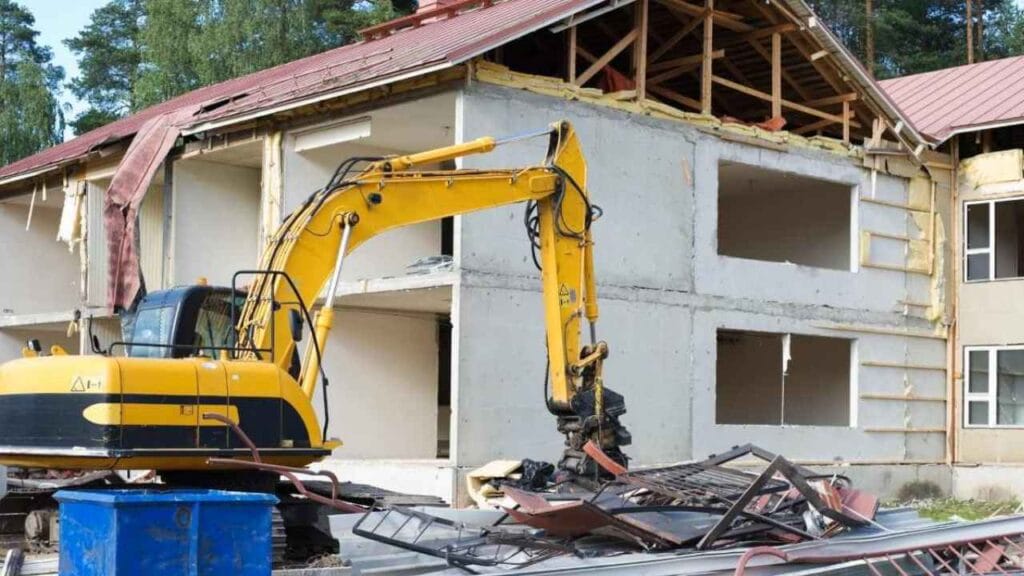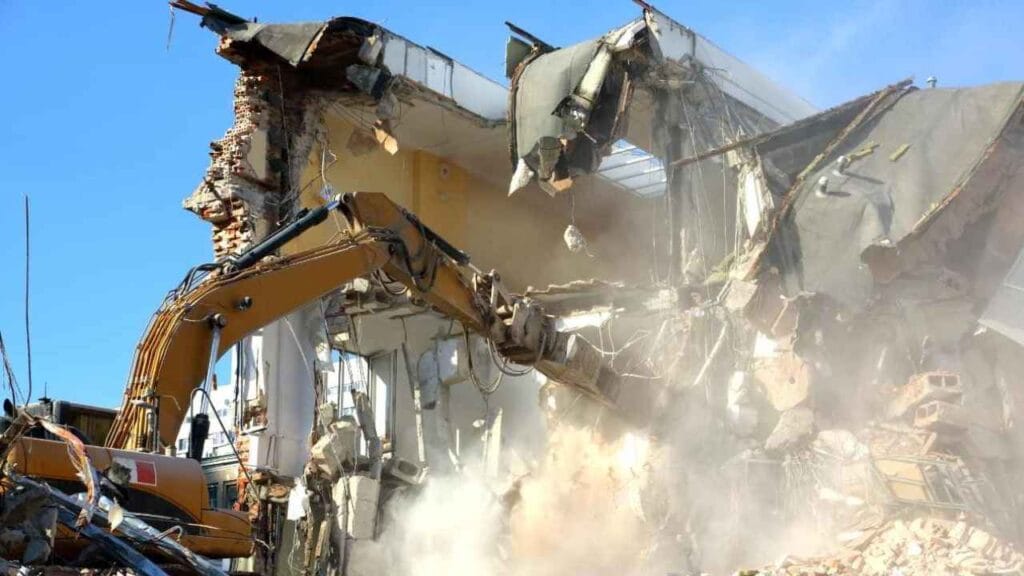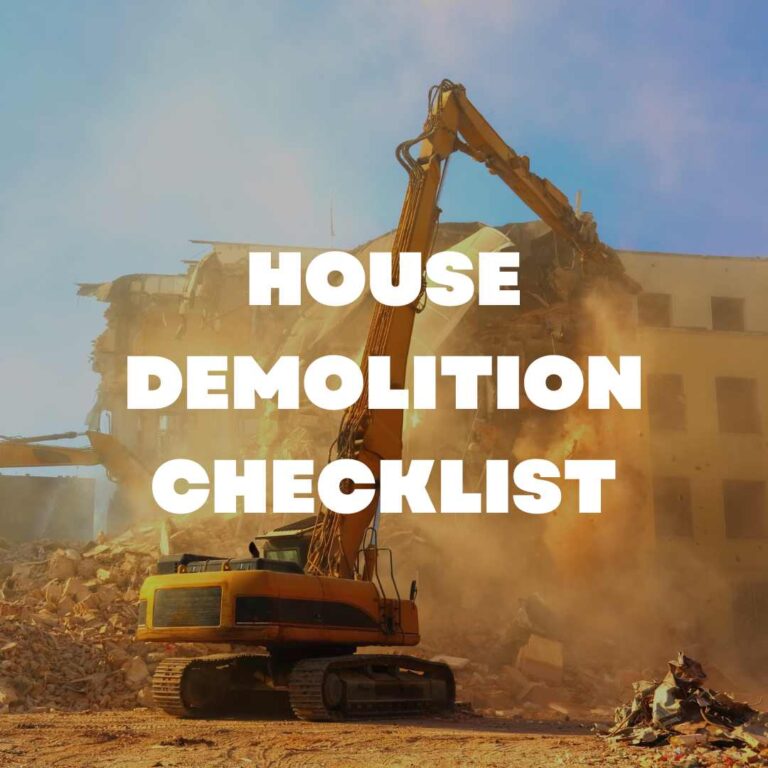Pro House Demolitions Brisbane provides safe, efficient demolition services for homeowners and businesses. Our team brings years of experience and a deep understanding of Brisbane’s regulations to every project. We ensure each job is completed on time, safely, and with minimal disruption.
This guide explains the key differences between commercial and residential demolition. You’ll learn about the structures involved, the equipment required, and the safety protocols. Let’s begin!
Table of Contents
ToggleWhat Defines Residential and Commercial Demolition?

Residential Demolition
Residential demolition involves removing structures built for living using appropriate demolition methods. These projects are smaller in scale and often address specific needs like renovations, safety concerns, or rebuilding.
Examples of Residential Structures:
- Houses
- Apartments
- Townhouses
- Garages
- Sheds
Reasons for Residential Demolition:
- Renovations or Extensions: Clearing old buildings for new construction.
- Safety Concerns: Eliminating unsafe or deteriorating structures.
- Property Redevelopment: Preparing land for housing developments or updated living spaces.
Commercial Demolition
Commercial demolition involves dismantling structures designed for business or industrial use. These projects require specialised equipment and detailed planning.
Examples of Commercial Structures:
- Office complexes
- Warehouses
- Shopping centres
- Factories
- Restaurants
Reasons for Commercial Demolition:
- Redevelopment: Replacing outdated properties with modern facilities.
- Structural Integrity Issues: Removing buildings that are unsafe or damaged.
- Repurposing Land: Creating space for new commercial or industrial uses.
Key Differences Between Residential and Commercial Demolition
Comprehensive Comparison Table
| Aspect | Residential Demolition | Commercial Demolition |
|---|---|---|
| Scale and Size | Smaller structures like houses or townhouses. | Larger buildings such as warehouses and office complexes. |
| Purpose | Renovations, rebuilds, or safety concerns. | Redevelopment, repurposing, or resolving structural issues. |
| Equipment Used | Small tools and machinery like mini excavators. | Heavy-duty machinery such as cranes and bulldozers. |
| Permitting | Requires fewer permits and simpler processes. | Requires multiple permits, environmental assessments, and zoning compliance. |
| Waste Management | Simpler disposal due to less hazardous waste. | Involves handling materials like concrete, steel, and hazardous substances. |
| Cost Factors | Generally lower due to smaller scale and fewer requirements. | Higher costs due to advanced equipment and regulatory compliance. |
| Timelines | Shorter timelines, often completed within days. | Longer timelines, may take weeks or months. |
Scale and Complexity Explained
Residential Demolition
Residential demolition focuses on smaller structures like houses or garages. These projects use straightforward methods to demolish simpler designs with fewer materials. They are often located in close neighbourhoods, where noise and dust control are essential to avoid disrupting nearby residents.
Commercial Demolition
Commercial demolition involves larger structures such as multi-story buildings or warehouses. These projects require advanced techniques andheavy equipment provided by professional commercial demolition services to safely remove materials like reinforced concrete, steel beams, and hazardous substances, including asbestos.
Materials and Waste Management
Residential Projects
Residential demolition typically uses simpler materials, such as wood, brick, and plaster. Waste disposal is easier, and materials like timber and windows can often be salvaged for reuse or recycling.
Commercial Projects
Commercial demolition requires detailed waste management. Materials such as steel, concrete, and glass must be sorted on-site for proper disposal. Hazardous materials, like lead or asbestos, need specialised handling to ensure safety and environmental compliance.
Cost and Time Considerations
Residential Demolition Costs
- Lower costs due to smaller-scale projects and less complex equipment.
- Expenses include labour, equipment rental, and debris removal.
Commercial Demolition Costs
- Higher costs due to the project’s size, advanced machinery, and regulatory requirements.
- Additional costs may include environmental assessments, permits, and safety compliance measures.
Timelines
- Residential projects are quicker, often completed in a few days.
- Commercial projects take longer, ranging from weeks to months, due to their scale and complexity.
The Demolition Process: Step-by-Step Overview
Both residential and commercial demolition follow planned steps to ensure safety, efficiency, and compliance with regulations. Here is a clear breakdown of the process.
1. Planning and Permits
Residential Demolition
- Site Inspection: Assess the property to identify hazards like asbestos.
- Permits and Approvals: Obtain local council permits, often a straightforward process.
- Utility Disconnections: Shut off water, gas, and electricity to eliminate risks during work.
Commercial Demolition
- Comprehensive Assessment: Evaluate the structure and conduct environmental impact assessments.
- Multiple Permits: Everydemolition must secure zoning approvals, environmental clearances, and workplace safety certifications.
- Stakeholder Coordination: Communicate with neighbouring businesses, utility providers, and authorities.
2. Techniques and Methods
Residential Demolition
- Manual Demolition: Use small tools for specific tasks like removing garages or kitchens.
- Small Machinery: Deploy mini excavators and skid steers for efficient removal of demolition debris.
- Minimal Disruption: Employ strategies to limit noise and dust for neighbours.
Commercial Demolition
- Mechanical Demolition: Use bulldozers, cranes, and excavators to efficiently dismantle alarge commercial building during large-scale projects.
- Implosions: Apply controlled explosives to bring down high-rise buildings quickly.
- Deconstruction: Carefully remove building materials like steel and concrete for reuse or recycling.
3. Safety and Risk Management
Shared Safety Protocols
- Workers wear personal protective equipment (PPE) to ensure a safe working environment during demolition projects.
- Hazard assessments are conducted before starting work.
- Utility shut-offs prevent accidents like gas leaks or fires.
4. Unique Risks
- Residential Demolition: Close proximity to neighbours may cause noise complaints or property damage.
- Commercial Demolition: Larger structures increase risks of hazardous materials and legal liabilities due to the size and complexity of the projects.
5. Challenges and Considerations
Every demolition project comes with specific challenges that require thoughtful planning. Residential and commercial demolitions have distinct obstacles that must be managed effectively.
Unique Challenges in Residential Demolition
Noise and Neighbourhood Disruptions
Residential building projects are often in quiet, densely populated areas. Noise, dust, and vibrations from demolition can disturb neighbours and lead to complaints.
Homeowner Involvement
Homeowners may prefer to stay involved, leading to potential delays when plans change mid-project.
Small-Scale Hazardous Material Handling
Older homes may contain asbestos, mould, or lead-based paint that require careful removal.
Unique Challenges in Commercial Demolition
Handling Hazardous Materials
Commercial demolitions often include dangerous substances like asbestos, industrial chemicals, and lead, whichneed to be handled safely to protect workers and the environment.
Complex Coordination with Stakeholders
These projects involve business owners, neighbouring property managers, and government authorities, increasing the risk of delays due to miscommunication.
Legal Compliance and Liability
Failing toobtain the necessary permits can lead to regulatory fines or lawsuits.
Managing Large-Scale Logistics
Commercial demolitions require advanced equipment and techniques and careful planning to handle logistics, especially in urban settings, to avoid damaging nearby structures.
Residential Demolition: What Homeowners Need to Know
Preparing Your Property for Demolition
- Clear the Space: All personal items, furniture, and valuables should be removed from the site. Secure areas that will not be affected in partial demolitions.
- Disconnect Utilities: Shut off water, gas, and electricity before work begins to ensure safety.
- Asbestos Inspections: Engage licensed professionals to inspect and remove asbestos if present in the property.
Timeline and Costs
- Timeline: Residential demolitions typically finish within a few days.
- Costs: Expenses depend on property size, hazardous material removal, and waste disposal.

Commercial Demolition: What Stakeholders Should Prepare For
Key Considerations for Business Owners and Managers
- Pre-Demolition Planning: Conduct a site assessment and identify salvageable materials. Address hazardous materials such as asbestos.
- Stakeholder Coordination: Inform neighbours, employees, and customers about timelines and potential disruptions.
Managing Risks and Timelines
- Timeline: Commercial projects take weeks or months, depending on complexity.
- Risk Management: Prohouse Demolitions Brisbane ensures compliance with regulations, preventing delays and reducing risks.
Conclusion
Understanding the differences between residential and commercial demolition is vital for effective project planning. Residential demolition focuses on smaller, straightforward projects for living spaces. Commercial demolition involves larger, complex structures requiring advanced tools and compliance with strict regulations. Both demand expert management to ensure safety, efficiency, and environmental responsibility.
Pro House Demolition Brisbane is a trusted demolition contractor, offering professional demolition services backed by expertise, local knowledge, and high standards. Contact us today to learn more or request a free quote for your project.
Now that you understand the key differences between residential and commercial demolition, it’s a good time to explore another important topic. Check out our next article to learn the difference between demolition and renovation, and find out which option is right for your project.
Frequently Asked Questions
1. What techniques are used in commercial demolition versus residential demolition?
Commercial demolition uses techniques like implosions, mechanical demolition with cranes or wrecking balls, and deconstruction to salvage materials. These methods handle large structures and complex designs. Residential demolition relies on manual tools and smaller equipment like mini excavators for controlled dismantling. Both projects may use selective demolition to target specific areas. Choosing the right demolition approach ensures efficiency and safety for any project.
2. How does noise control differ in residential and commercial demolition projects?
Noise control is crucial for residential demolition because of close neighbours. It involves using quieter equipment and working during limited hours. In commercial demolition, urban sites may require sound barriers and off-peak scheduling to reduce noise impact. Both projects follow local noise regulations.
3. Why is commercial demolition generally more expensive than residential demolition?
Commercial demolition costs are higher due to larger structures, advanced machinery, and stricter regulations. It often requires cranes, detailed environmental assessments, and additional permits. Residential demolition is smaller in scope, using fewer resources and requiring less time.
4. Can materials from residential and commercial demolitions be recycled?
Yes, demolition materials can often be recycled. Residential projects recover items like wood, bricks, and fixtures, while commercial demolitions handle larger-scale materials such as concrete, steel, and glass. Recycling reduces landfill waste and supports sustainable practices.




